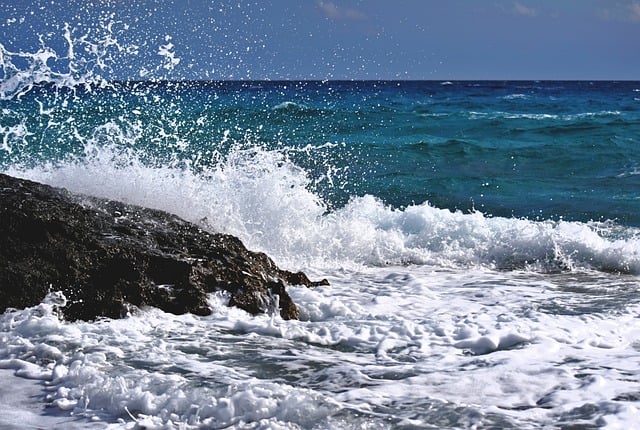Introduction to the Oceans of the World
When asking How Many Oceans Are There On Earth? and exploring their names, we delve into the vast expanses of water that cover approximately 71% of the Earth’s surface. Historically, the number of recognized global oceans has evolved, leading to the commonly accepted count today. The vast bodies of saltwater that constitute the Earth’s hydrosphere are crucial not only for environmental balance but also for human life and activities.
The concept and classification of oceans have seen a transformation over centuries as explorations and scientific understanding have progressed. Initially viewed as large, mysterious bodies of water, today’s oceans are recognized as vital components of Earth’s ecosystem, influencing climate, weather patterns, and housing diverse marine life. This recognition underscores the importance of oceans in global ecology and the need for their preservation.
Oceans are vast not only in size but also in their impact on both global and local scales. They play a key role in transportation, commerce, and even leisure. Understanding the names and extents of these oceans is crucial for geographical education and for fostering an appreciation of their environmental significance.
The Five Major Oceans of the Earth
The answer to How Many Oceans Are There On Earth? is now widely accepted to be five. These include: the Pacific Ocean, Atlantic Ocean, Indian Ocean, Arctic Ocean, and the Southern Ocean. Each of these oceans has distinct characteristics like area, depth, and marine biodiversity. The Pacific Ocean, being the largest, extends from the Arctic North to the Southern edges near Antarctica, making it a pivotal component in global water circulation and climate influence.
The Atlantic Ocean, known for its S-shaped structure, is bounded by the Americas to the west and Europe and Africa to the east. It is crucial for its role in the transatlantic travel and the significant economic activities including major shipping routes. The Indian Ocean, primarily bounded by Asia, Africa, and Australia, is known for its warm waters influencing monsoon weather patterns across South Asia.
The Arctic Ocean, mostly covered by sea ice through much of the year, is central to global climate regulation. Its melting ice due to global warming is a major concern for rising global sea levels. The Southern Ocean, encircling Antarctica, is the newest recognized ocean and is vital for its circumpolar currents that help drive the global conveyor belt of ocean water.
Geographical Distribution and Unique Characteristics
Each of the world’s oceans has unique characteristics that set them apart. The Pacific Ocean not only holds the title of the largest ocean but also the deepest, with the Mariana Trench reaching depths of over 36,000 feet. Its vast area supports an incredibly diverse ecosystem, including thousands of species of fish and hundreds of coral reef formations. This ocean’s size and depth play a crucial role in Earth’s water and heat distribution systems.
The Atlantic Ocean is the second-largest and is known for its significant interaction with human history, particularly during the age of exploration and the transatlantic slave trade. Today, it remains a vital route for international trade and cross-continental travel. Its waters also host the Bermuda Triangle, a region of many maritime mysteries.
The Indian Ocean’s warmer waters are critical for the climate of surrounding regions, and its monsoon winds have shaped the trade and culture of many bordering countries for centuries. The richness of its marine life also supports the fisheries of many nations. The Arctic Ocean and Southern Ocean are pivotal in influencing global weather patterns and are essential areas of research for understanding climate change.
Ecological Importance and Conservation Challenges
The ecological roles of Earth’s oceans are immense. They produce over half of the world’s oxygen and absorb large amounts of carbon dioxide, making them significant to combating climate change. The diverse ecosystems within each ocean, from coral reefs to deep-sea vents, support an abundance of marine life. However, these vital resources face threats such as overfishing, pollution, and the impacts of climate change.
Conservation efforts are crucial in addressing these challenges. International agreements and marine protected areas are vital in safeguarding ocean health. Initiatives like the United Nations’ Sustainable Development Goal 14, which aims to conserve and sustainably use the oceans, seas, and marine resources, are central to global conservation strategies.
Public awareness and education also play a crucial role in ocean conservation. Understanding the importance of oceans and the impacts of human activity can help foster more sustainable interactions with these critical ecosystems.
Technological and Scientific Explorations
Advancements in technology have opened new frontiers in ocean exploration. Innovations such as deep-sea submersibles and unmanned underwater vehicles allow scientists to study previously inaccessible parts of the ocean. Through these technologies, we gain critical insights into the biodiversity, geology, and chemical properties of ocean ecosystems.
Scientific research in these areas leads to better understanding of phenomena such as ocean currents, tectonic activities, and marine biology. This knowledge is essential for predicting weather patterns, understanding ecological changes, and managing marine resources effectively.
Furthermore, studies in the deepest parts of the oceans continually reveal new species and ecosystems, highlighting the vast unknown still left to explore. These discoveries not only deepen our understanding of the natural world but also provide potential new resources for medicine and technology.
Conclusion
In conclusion, the query How Many Oceans Are There On Earth? opens up a broader discussion about these critical components of the Earth’s ecosystem. The five oceans – the Pacific, Atlantic, Indian, Arctic, and Southern – each play a unique role in environmental regulation, support diverse ecosystems, and are central to global economic systems.
The protection and scientific exploration of the oceans are vital for maintaining their health and the services they provide us. As research and technology continue to advance, our understanding and appreciation of the oceans will deepen, facilitating better conservation and sustainable use of these vital resources.
By educating ourselves and future generations about the importance of the oceans and the challenges they face, we can ensure that these vast, life-sustaining bodies of water continue to thrive for millennia to come.









